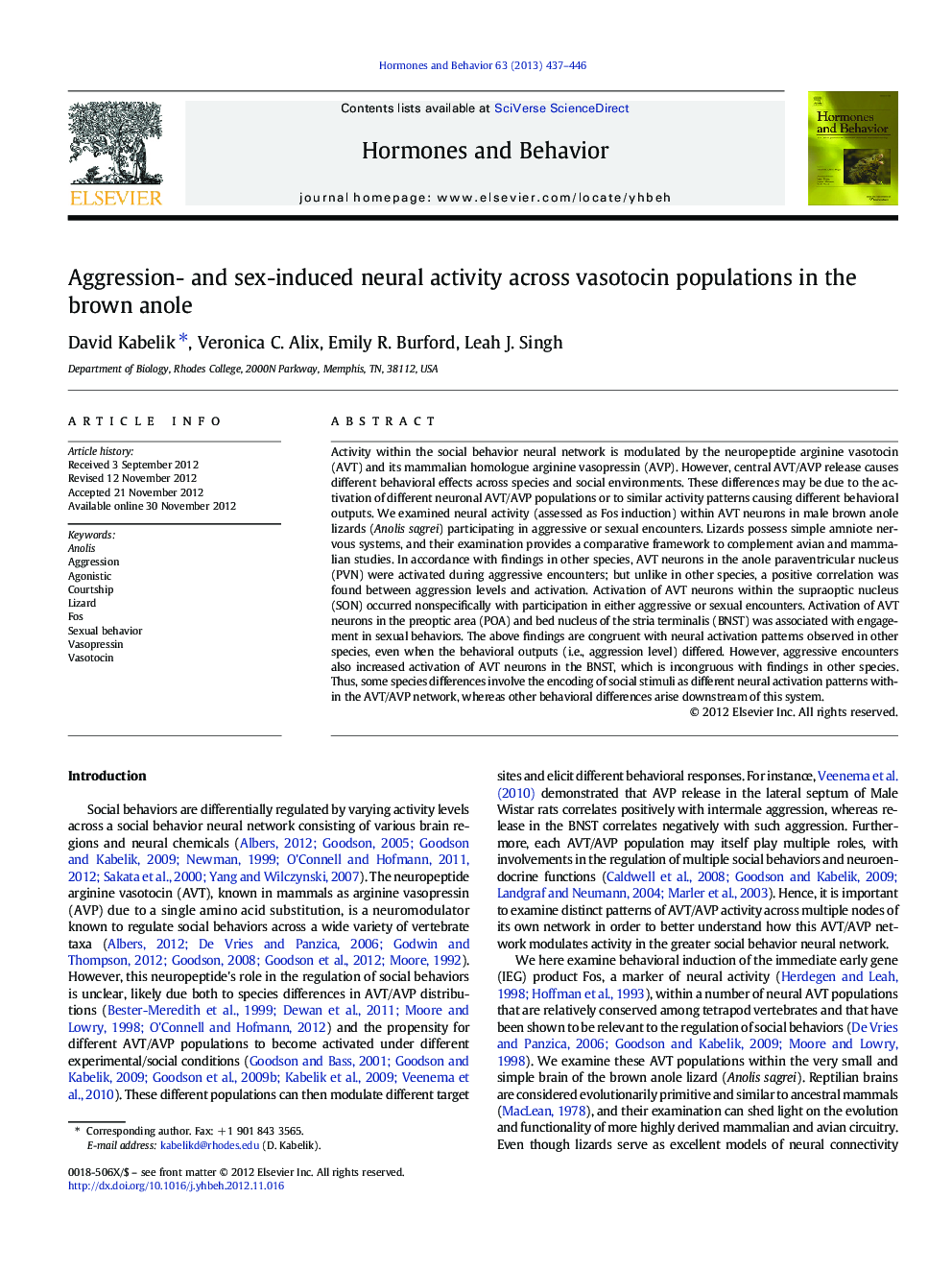| کد مقاله | کد نشریه | سال انتشار | مقاله انگلیسی | نسخه تمام متن |
|---|---|---|---|---|
| 323993 | 540859 | 2013 | 10 صفحه PDF | دانلود رایگان |

Activity within the social behavior neural network is modulated by the neuropeptide arginine vasotocin (AVT) and its mammalian homologue arginine vasopressin (AVP). However, central AVT/AVP release causes different behavioral effects across species and social environments. These differences may be due to the activation of different neuronal AVT/AVP populations or to similar activity patterns causing different behavioral outputs. We examined neural activity (assessed as Fos induction) within AVT neurons in male brown anole lizards (Anolis sagrei) participating in aggressive or sexual encounters. Lizards possess simple amniote nervous systems, and their examination provides a comparative framework to complement avian and mammalian studies. In accordance with findings in other species, AVT neurons in the anole paraventricular nucleus (PVN) were activated during aggressive encounters; but unlike in other species, a positive correlation was found between aggression levels and activation. Activation of AVT neurons within the supraoptic nucleus (SON) occurred nonspecifically with participation in either aggressive or sexual encounters. Activation of AVT neurons in the preoptic area (POA) and bed nucleus of the stria terminalis (BNST) was associated with engagement in sexual behaviors. The above findings are congruent with neural activation patterns observed in other species, even when the behavioral outputs (i.e., aggression level) differed. However, aggressive encounters also increased activation of AVT neurons in the BNST, which is incongruous with findings in other species. Thus, some species differences involve the encoding of social stimuli as different neural activation patterns within the AVT/AVP network, whereas other behavioral differences arise downstream of this system.
► Sexual behaviors activated AVT neurons in the POA, BNST, SON, and PVN.
► Aggressive behaviors activated AVT neurons in the PVN and BNST.
► PVN-Fos colocalization was positively associated with displayed aggression.
► Neural activity was primarily related to the behavior of the focal rather than stimulus animal.
► Comparisons are drawn with mammalian and avian studies.
Journal: Hormones and Behavior - Volume 63, Issue 3, March 2013, Pages 437–446